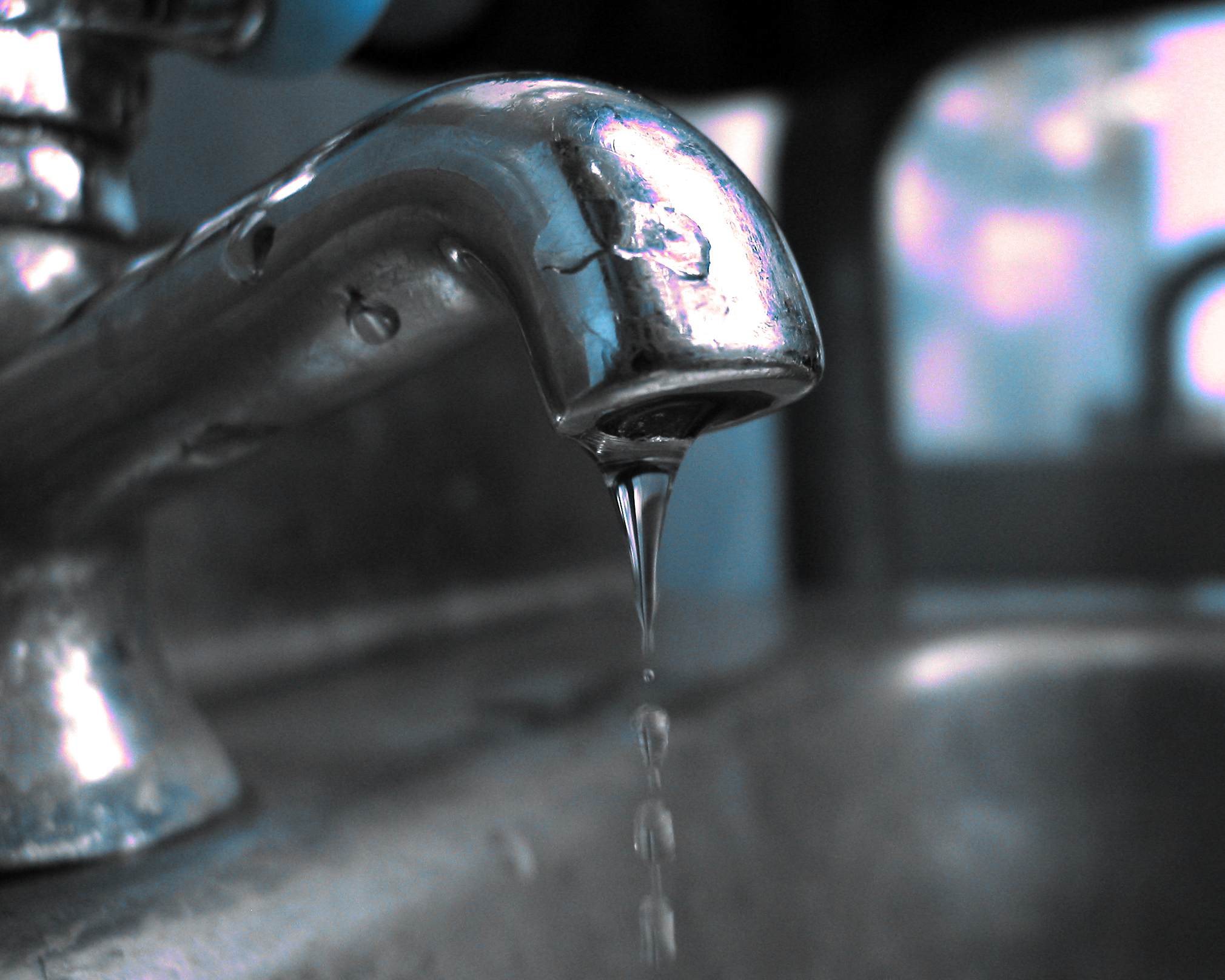They are making several good pointers on Leaky Faucets: Why They Happen & What to Do About Them overall in this great article beneath.

Trickling taps may look like a minor trouble, however their effect exceeds simply the annoyance of the sound. From drainage to incurring unnecessary monetary prices and health and wellness threats, neglecting a trickling faucet can result in different consequences. In this short article, we'll look into why it's crucial to resolve this typical family issue promptly and efficiently.
Waste of Water
Ecological Impact
Leaking taps contribute considerably to water wastefulness. According to the Environmental Protection Agency (EPA), a solitary tap trickling at one drip per second can squander more than 3,000 gallons of water each year. This not just stress water resources however likewise impacts communities and wild animals based on them.
Step-by-Step Overview to Fixing a Dripping Faucet
Tools Called for
Before attempting to deal with a leaking tap, collect the required tools, consisting of an adjustable wrench, screwdrivers, replacement components (such as washers or cartridges), and plumber's tape.
Common Faucet Issues and Their Solutions
Identify the kind of tap and the particular concern causing the drip. Common troubles consist of worn-out washers, rusty shutoff seats, or faulty O-rings. Describe supplier directions or online tutorials for step-by-step guidance on repair work.
Financial Prices
Raised Water Costs
Past the environmental influence, dripping taps can pump up water expenses significantly. The collected wastage with time equates right into greater utility expenditures, which might have been stayed clear of with timely repairs.
Prospective Building Damages
Additionally, long term dripping can bring about harm to fixtures and surface areas surrounding the faucet. Water build-up can trigger staining, rust, and also architectural problems if left ignored, resulting in additional repair prices.
Health and wellness Worries
Mold And Mildew and Mildew Growth
The consistent presence of wetness from a leaking faucet develops a suitable environment for mold and mildew growth. These fungis not just compromise interior air high quality yet likewise present health risks, especially for individuals with respiratory problems or allergic reactions.
Waterborne Conditions
Stationary water in leaking faucets can become a breeding ground for bacteria and other microorganisms, enhancing the risk of waterborne illness. Impurities such as Legionella bacteria thrive in stagnant water, possibly resulting in serious diseases when ingested or inhaled.
DIY vs. Professional Repair
Benefits and drawbacks of DIY Repair Service
While some might attempt to take care of a leaking faucet themselves, DIY fixings feature their very own set of challenges. Without appropriate expertise and tools, do it yourself efforts can worsen the problem or result in incomplete fixings, extending the issue.
Benefits of Hiring a Specialist Plumber
Working with a specialist plumber makes sure that the underlying reason for the leaking faucet is dealt with successfully. Plumbings possess the know-how and tools to identify and repair tap concerns efficiently, conserving time and reducing the threat of additional damages.
Environmental Responsibility
Specific Contribution to Conservation
Taking responsibility for taking care of leaking taps straightens with wider efforts toward water conservation and ecological sustainability. Every individual's activities collectively make a substantial effect on protecting priceless resources.
Sustainable Living Practices
By focusing on punctual fixings and taking on water-saving practices, individuals contribute to sustainable living techniques that profit both present and future generations.
Safety nets
Regular Upkeep Tips
To stop trickling faucets, perform regular maintenance such as cleaning aerators, evaluating for leakages, and replacing damaged parts immediately. Additionally, consider installing water-saving gadgets or updating to much more effective fixtures.
Importance of Prompt Repair Works
Resolving dripping taps as soon as they're seen prevents further water wastage and potential damage, eventually conserving both water and cash in the future.
Influence On Residential Property Value
Assumption of Well-Maintained Property
Preserving a building in good condition, including addressing maintenance issues like trickling taps, improves its regarded value and desirability amongst potential buyers or tenants.
Impact on Resale Value
Residences with well-maintained plumbing fixtures, including taps, command greater resale values in the property market. Addressing trickling taps can add to a positive impression during building evaluations and settlements.
Conclusion
Dealing with a dripping faucet goes beyond simple comfort; it's a vital step towards preserving water, reducing monetary expenses, and protecting wellness and property. Whether via do it yourself repair services or expert aid, doing something about it to repair leaking taps is a little yet impactful means to advertise accountable stewardship of sources and add to a healthier, much more lasting future.
How to Fix a Leaky Faucet: Step-by-Step Repair Guide
A leaky faucet may seem like a simple annoyance, but if it's not fixed promptly, that leak could cost hundreds to potentially thousands. From water damage to mold, mildew, and high water bills, even a tiny leak can be catastrophic if left unattended. Damage like this can even affect the overall value of your home, so it's important to take the right approach for leaky faucet repair. You may need the help of a plumber in some cases, but we've got a few tips you can try on how to fix a leaky faucet before calling the pros.
Four Faucet Types
When you're learning how to fix a leaky faucet, the first step is knowing what kind of faucet you're working with! There are four common types.
Cartridge Faucets
Cartridge faucets come in one- or two-handled varieties. In one-handled cartridge faucets, hot and cold water combines in a single cartridge. In the two-handled versions, hot and cold water are controlled separately and mixed in the faucet.
Ball Faucets
Ball faucets have a single lever you push up and down to adjust the pressure and rotate to change the temperature. A slotted metal ball controls the amount of water allowed into the spout.
Compression Washer Faucets
They're the oldest type of faucet, but they're still used in many homes — especially older ones. Compression faucets have two separate handles that, when turned, raise or lower the washer that seals a water valve. This valve stops water from flowing through the faucet when it is turned off.
Disc Faucets
Disc faucets rarely need to be repaired due to their maintenance-free design. The water flow is controlled by two discs — the upper one raises and lowers against a fixed lower disc, creating a watertight seal. If your disc faucet starts leaking, you may need to replace the seals or clean residue buildup from the inlets.
Fixing a Leaky Faucet
Step 1: Turn Off the Water
Whether you're learning how to fix a leaky bathtub faucet or how to fix a leaky kitchen faucet, always turn off the water supply to your working area when you're fixing a leak. The last thing you want is a flood added to your list of things to fix.
Look for the shutoff valves below your sink or around the tub and turn them clockwise to stop the water flow. If your faucet doesn't have shutoff valves, you may need to turn off the water for the whole house. Check to make sure it's off by turning the faucet on. If nothing comes out, you're ready to start the repair.
Step 2: Take Apart the Faucet
How you disassemble your faucet depends on the type of fixture you have. You can use a flathead screwdriver to remove the caps on top of the handle or handles for cartridge and compression faucets. Inside, you should see handle screws. Unscrew these with a screwdriver to remove the handle.
Disc- and ball-style faucets will typically have an inlet screw near the handle, and removing that will reveal the interior of the faucet.
Detach the Valve Stem
For cartridge- and compression-style faucets, you'll see the inner valve stem or cartridge once you remove the faucet handles. If you have a compression faucet, unscrew the brass valve stem. If you have a cartridge faucet, pull out the cartridge. If your cartridge has been in place for a while, it may require some tools or extra force to remove it due to mineral deposits.
Examine and Replace Parts
Once you've removed the parts, check them out to confirm what needs to be replaced. You may see corroded rubber washers, O-rings, stems, or cartridges. On a ball-style faucet, check the seats and springs for damage.
If you need to repair a leaky disc faucet, check the inlet and seals on the lower disc.
Once you determine what parts must be replaced, visit your local hardware store. Bring the damaged parts with you to ensure you can purchase the correct components to replace them.
Clean Valves and Faucet Cavity
If you've removed a stem or cartridge, you may notice mineral buildup in the faucet's threads. Use white vinegar to clean the valve seat by soaking it for a few minutes, then scrub it away with a soft toothbrush and rinse with warm water. You can also clean the interior of the faucet in the same way.
Reassemble the Faucet
Once your faucet is cleaned and the required parts have been replaced, it's time to reassemble it. Put the pieces back together and slowly turn the water supply back on. Doing this slowly is crucial because too much initial water pressure can damage the new hardware you've just installed.
https://homewarranty.firstam.com/blog/how-to-fix-leaky-faucet

I was brought to that editorial about What Causes Leaky Faucets & How To Fix Them from a friend on a different web property. Appreciated our article? Please quickly share it. Let others locate it. Thanks a lot for going through it.
 Tony Danza Then & Now!
Tony Danza Then & Now! Brandy Then & Now!
Brandy Then & Now! Jenna Von Oy Then & Now!
Jenna Von Oy Then & Now! Traci Lords Then & Now!
Traci Lords Then & Now! Jeri Ryan Then & Now!
Jeri Ryan Then & Now!